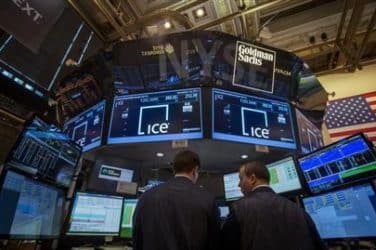
Industry counters that derivatives exchanges already possess such information.
Regulators and market participants are engaging in a spirited debate over what constitutes high-frequency trading, and what restrictions, if any, should be placed on its use.
The issue is being framed against the likelihood that algorithmic and high-frequency trading strategies will migrate from the world of listed equities and derivatives to the OTC world, once new regulations mandating centralized execution and clearing of swaps kick in.
Scott O’Malia, a commissioner on the Commodity Futures Trading Commission, has suggested that before the CFTC recommend rules for HFTs, it develop “a precise and reasoned definition of who is and who is not an HFT,” according to a letter he wrote to the CFTC’s Technology Advisory Committee (TAC).
The CFTC needs to collect reliable data so it can define HFT trading activity before imposing regulations.
“Without a principled definition of what constitutes an HFT, any oversight scheme may inadvertently extend either too narrowly or too broadly,” he said.
O’Malia proposed a multi -part test to determine what constitutes an HFT, such as the use of extraordinarily high-speed order submission systems with speed in excess of five milliseconds; the use of computer programs or algos for automated decision making, without human direction for individual trades or orders, and very short time-frames for establishing and liquidating positions.
The Principal Traders Group and the Futures Industry Association have countered with a suggestion that rather than try to come up with a precise definition of HFT, regulators utilize existing data gathered by listed derivatives exchanges such as CME and NYSE Liffe U.S.
They suggested that the CFTC define a new term, “Direct ATS Participant,” characterized by use of an automated trading system directly connected to an exchange.
By defining the set of market participants in this manner, the CFTC can readily use data that’s already collected by the exchanges to further study any risks posed by this group, according to the PTG/FIA.
Leading U.S. derivatives exchanges already possess, and through exchange rules, require that market participants provide information sufficient to classify trading and traders by any number of criteria.
For example, the CME Group’s Globex electronic trading specification requires each order to indicate whether an order originated from an ATS. The CME defines an ATS as “a system that automates the generation and routing of orders to Globex.”
CME requires that any ATS be identified by a unique FIX tag, which is registered to the entity directly responsible for oversight of the ATS.
Intercontinental Exchange (ICE) requires registration of Authorized Trader IDs for all individuals and ATSs directly accessing ICE markets.
Since 2001, NYSE Liffe U.S. has required members to register all trading algorithms, referred to as Automated Price Injection Models, prior to use. The registration information specifics the trader ID, as well as contact information of those responsible for supervising the algorithm’s peroration in the market.
Regulators on both sides of the Atlantic appear to be conflicted over high-frequency and algorithm trading, on the one hand saying that it needs to be controlled while on the other recognizing that it represents the wave of the future.
This ambivalence is reflected by the fact that the new MiFID directive calls for market-making obligations to be imposed on high-frequency traders.
Yet only a few weeks prior to the MiFID release in October, the U.K. government released a report on HFT that concluded that the paces of development or technology innovations in the financial markets, and the speed of their adoption, are likely to increase in the future.
“Computer-designed and computer-optimized robot traders are likely to be increasingly viewed as routine, and in time could potentially come to replace current algorithms designed and refined by humans,” the report said.






